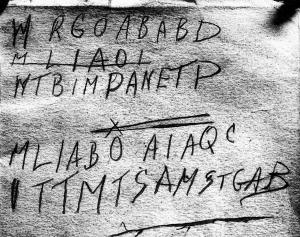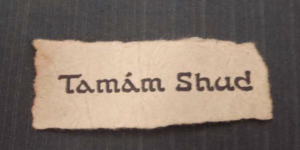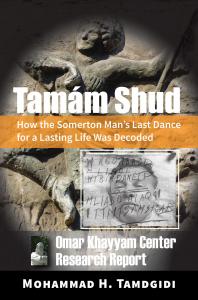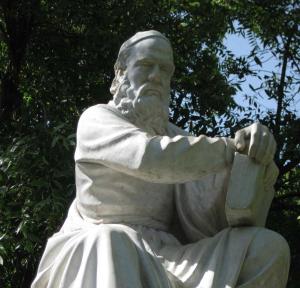Doubting the New Somerton Man Findings: Do 0.01% Error Chances Actually Matter in Science?
The best scientific explanation is always one that verifiably incorporates and synthesizes all the relevant existing data gathered so far, past, and present.
According to Tamdgidi, "the new findings about TSM, identifying him as Carl ‘Charles’ Webb with 99.99% certitude, certainly raise new hopes and further venues for exploration, but at the same time add new questions about and challenges for interpreting previously collected data, ones that are still relevant and must also be explained."
0.01% error chances actually count in science, often proving to be more helpful than drawing 99.99% conclusions. In fact, major errors in science are often learned initially by way of unexpected 0.01% chances of error. Something minor is found not to quite fit a story initially; what seems logical at first proves not to be so upon further reflection. It is for this reason that those offering new scientific propositions usually share all the details of their new findings in advance and refrain from drawing final conclusions, to make it possible for others to also judge for themselves the soundness of any ideas that have been offered as solutions to longstanding puzzles.
Although science aspires to be value neutral, Tamdgidi write, it can never be so without allowing for open and self-reflective acknowledgment of biases in investigators’ work. DNA study results and their interpretations are not purely physical facts or findings but result from human conducted studies and are always explored amid personal and institutional settings that are influenced by human values, interests, biases, and errors.
It is of course always wonderful to make breakthroughs in solving puzzles such as the Somerton Man case, Tamdgidi writes. However, seventy plus years of waiting would be better served by a more cautious and less rushed drawing of conclusions. Ultimately, this case is privately about a person, his relatives and friends, and their characters and lives, and publicly about Australia and how it handles its longstanding unsolved cases. Human beings are much more complicated than what may appear in a newspaper ad or divorce filing. Those who have wished to put to rest the story of the Somerton Man's death must obviously care about returning him back to dust with dignity to the extent his life had and deserved.
There is a choice here, for example, of reburying TSM as a gambler or as a thoughtful poet who was depressed about having lost many loved ones suddenly to old age or a world war, reflecting on the meaning of life amid a marriage gone sour while facing a terminal illness. The best scientific explanation, in the author's view, is always one that verifiably incorporates and synthesizes all the relevant existing data gathered so far, past, and present, and refrains from arbitrarily picking and choosing some clues or coincidences at the cost of others simply because new conclusions help gloss over past interpretive failures.
Tamdgidi's posted article offers some points to consider while investigating and interpreting the information being newly reported and analyzed. It first considers the possibility that Carl 'Charles' Webb may not be the Somerton Man. It then considers the second possibility that the two may be the same person.
In Tamdgidi's previously published 2021 report, the Somerton Man's code was deciphered to be a suicide note, written in the poetic form of a quatrain composed as a transliteration from Arabic, in the style of "Tamám Shud." The torn-out piece found in his fob pocket basically served as a key to the transliterated nature of the code found on the back of the book from which it had been torn. The Somerton Man was thus revealed to be poetically inclined, creatively orchestrating his tragic suicide facing a terminal illness as a way of leaving a lasting trace in public memory, having been inspired by the enduring example of Omar Khayyam's poetry.
Tamdgidi specializes in exploring and advancing the sociological imagination in comparative cultural and global/world-historical frameworks. The sociological imagination, a term coined by the noted American sociologist C. Wright Mills in 1959, is a mode of inquiry in sociology centering on the idea that human life can be best understood by way of exploring how personal and private troubles of individuals and the public issues of their times relate to one another. The Somerton Man case provides a tragic, yet fascinating, window for the cultivation of our sociological imaginations.
——————————————
Mohammad H. (Behrooz) Tamdgidi is the founding director and editor of OKCIR: Omar Khayyam Center for Integrative Research in Utopia, Mysticism, and Science (Utopystics) (www.okcir.com) and its scholarly journal "Human Architecture: Journal of the Sociology of Self-Knowledge," which have served since 2002 to frame his independent research, teaching, and publishing initiatives. A former associate professor of sociology specializing in social theory at UMass Boston, he holds a Ph.D. and M.A. in sociology and a graduate certificate in Middle Eastern studies from Binghamton University (SUNY) and received his B.A. in architecture from U.C. Berkeley. Besides his work in progress on the 12-volume series "Omar Khayyam’s Secret: Hermeneutics of the Robaiyat in Quantum Sociological Imagination," his previous publications include "Liberating Sociology: From Newtonian Toward Quantum Imaginations: Volume 1: Unriddling the Quantum Enigma" (Okcir Press, 2020), "Gurdjieff and Hypnosis: A Hermeneutic Study" (Palgrave Macmillan, 2009) and "Advancing Utopistics: The Three Component Parts and Errors of Marxism" (Routledge/Paradigm, 2007). Due to research commitments and preference for written communication, the author can only be reached via email.
Mohammad Tamdgidi
OKCIR: Omar Khayyam Center for Integrative Research
pressrelease@okcir.com
Legal Disclaimer:
EIN Presswire provides this news content "as is" without warranty of any kind. We do not accept any responsibility or liability for the accuracy, content, images, videos, licenses, completeness, legality, or reliability of the information contained in this article. If you have any complaints or copyright issues related to this article, kindly contact the author above.





